Learning the butterfly stroke can be a challenging yet rewarding journey for swimmers of all levels. At LEARNS.EDU.VN, we understand the complexities involved in mastering this powerful stroke and are here to provide you with a comprehensive guide, enhanced training techniques, and expert insights to elevate your butterfly swimming. Unlock your potential in the pool with our detailed breakdown of the butterfly, focusing on body positioning, arm movements, kicking techniques, and breathing coordination to help you glide through the water.
1. Mastering Body Position for Butterfly Efficiency
Body position is the foundation of a great butterfly stroke. Maintaining a streamlined position minimizes drag and allows you to move through the water more efficiently.
1.1. Head Alignment and its Impact
Your head position dramatically affects your overall body alignment. Keeping your head in a neutral position, with your eyes looking slightly downward, is crucial.
- Neutral Alignment: Promotes a streamlined body position, reducing drag.
- Avoid Looking Forward: Looking forward causes your hips to drop, increasing drag and slowing you down.
1.2. Hip Position and Undulation
The butterfly stroke involves a distinct undulating motion that starts from your core and flows through your entire body.
- Hips Near the Surface: Keep your hips close to the surface to reduce drag.
- Undulating Movement: Initiate the undulation from your core, using your hips and core muscles to drive the movement.
- Full Body Engagement: Engage your entire body in the undulating motion to maximize power and efficiency.
1.3. Core Engagement
A strong core is essential for maintaining body position and generating power in the butterfly stroke.
- Stabilization: Engage your core muscles to stabilize your body and prevent excessive rotation.
- Power Transfer: Use your core to transfer power from your upper body to your lower body, creating a seamless and powerful stroke.
- Endurance: Strengthening your core will help you maintain proper body position and stroke technique for longer periods, improving your overall endurance.
2. Perfecting the Butterfly Pull: Power and Precision
The butterfly pull is a powerful movement that propels you forward. Mastering the pull involves precise hand entry, a strong underwater pull-through, and an efficient recovery.
2.1. Hand Entry and Catch
Proper hand entry sets the stage for a strong and effective pull.
- Width: Enter the water slightly wider than your shoulders, approximately at the 11 and 1 positions on a clock.
- Fingertips First: Enter with your fingertips first, extending your arms forward.
- Catch: Initiate the catch by engaging your forearms and pulling the water back.
2.2. Underwater Pull-Through
The underwater pull-through is where the majority of the power is generated in the butterfly stroke.
- High Elbows: Maintain high elbows throughout the pull to maximize the surface area of your forearms.
- Pulling Motion: Pull the water back in a smooth, continuous motion, keeping your hands shoulder-width apart.
- Avoid S-Pull: Focus on pulling straight back rather than an S-shaped pull, which can reduce efficiency.
2.3. Arm Recovery
An efficient arm recovery minimizes resistance and prepares you for the next stroke.
- Fully Extended Arms: Fully extend your arms as they exit the water.
- Straight Arm Sweep: Sweep your arms out and around in a wide arc, keeping them straight.
- Relaxation: Relax your shoulders and arms during the recovery to conserve energy.
2.4. Training Tools for Enhanced Pull
Utilizing training tools can significantly improve your pull strength and technique.
- Aqua Knuckles: Enhance the power of your pull by encouraging a more relaxed hand position.
- Paddles: Build strength and improve your feel for the water.
- Pull Buoys: Focus on your arm technique while maintaining proper body position.
Aqua Knuckles for Improved Pull
Aqua Knuckles are finger separators designed to increase the power of your pull in all four strokes. By creating a 5-10mm separation between your fingers, Aqua Knuckles encourage a more relaxed hand position, leading to greater efficiency and power. Studies indicate that using finger separators can improve pull force by up to 10% and increase swimming speed by up to 2.5%. Enhance your performance with Aqua Knuckles.
3. Mastering the Dolphin Kick: Propulsion and Coordination
The dolphin kick is a powerful, undulating motion that drives the butterfly stroke. Proper technique involves coordinating the kick with your arm movements and breathing pattern.
3.1. Kick Timing and Coordination
The butterfly stroke requires precise timing and coordination between the kick and arm movements.
- Two Kicks Per Stroke: Perform two dolphin kicks for every arm stroke.
- First Kick: The first kick helps propel your arms out of the water during the recovery phase.
- Second Kick: The second kick helps drive you forward as your hands re-enter the water.
3.2. Leg and Foot Position
Proper leg and foot position maximizes the effectiveness of the dolphin kick.
- Squeezed Legs: Keep your legs squeezed together throughout the kick.
- Pointed Toes: Point your toes to reduce drag and create a more streamlined profile.
- Slight Bend: Maintain a slight bend in your knees to generate power and flexibility.
3.3. Initiating the Kick
The dolphin kick should be initiated from the hips, not the knees.
- Hip-Driven Motion: Focus on initiating the kick from your hips, engaging your core muscles to generate power.
- Full Body Undulation: Allow the undulating motion to flow through your entire body, from your head to your toes.
- Upward Phase: Emphasize the upward phase of the kick as well as the downward phase to maximize propulsion.
3.4. The Science Behind the Dolphin Kick
The dolphin kick is a complex movement that relies on precise coordination and muscle activation. Research has shown that swimmers who master the dolphin kick can significantly improve their overall swimming speed and efficiency. By focusing on proper technique and timing, you can harness the power of the dolphin kick to enhance your butterfly stroke.
4. Coordinating Breathing for Optimal Butterfly Performance
Breathing in butterfly requires precise timing and coordination to avoid disrupting your body position and stroke technique.
4.1. Timing Your Breath
Proper timing is essential for efficient breathing in butterfly.
- Inhale During Recovery: Inhale as your arms recover and exit the water.
- Quick Breath: Take a quick breath to minimize the disruption to your body position.
- Exhale Underwater: Exhale fully underwater as your arms enter the water.
4.2. Head Position While Breathing
Maintaining proper head position while breathing is crucial for avoiding drag and maintaining body alignment.
- Chin at the Surface: Lift your head only enough to bring your chin to the surface of the water.
- Avoid Lifting Too High: Avoid lifting your head too high, as this will cause your hips to sink and increase drag.
- Neutral Position: Return your head to a neutral position, with your eyes looking down, as your arms enter the water.
4.3. Breathing Frequency
Adjusting your breathing frequency can help you conserve energy and maintain your stroke technique.
- Every Stroke Breathing: Breathe every stroke to ensure you are getting enough oxygen.
- Alternate Breathing: Breathe every other stroke to conserve energy and improve your endurance.
- Breathing Pattern: Experiment with different breathing patterns to find what works best for you.
4.4. The Importance of Rhythmic Breathing
Rhythmic breathing is a cornerstone of efficient butterfly swimming. By synchronizing your breath with your arm and leg movements, you can maintain a steady rhythm and conserve energy. Practice breathing drills to develop a consistent and sustainable breathing pattern.
5. Butterfly Drills to Enhance Your Technique
Incorporating specific drills into your training routine can help you isolate and improve individual components of the butterfly stroke.
5.1. Flow Drill
The flow drill helps you perfect the undulating motion in butterfly.
- Fins: Wear fins to enhance propulsion and focus on the dolphin motion.
- Focus: Concentrate on initiating the undulation from your core and allowing it to flow through your entire body.
- Repetitions: Perform multiple repetitions of the drill to develop muscle memory and improve coordination.
5.2. Single Arm Butterfly
The single arm butterfly drill helps improve your hand entry and chest press.
- Alternating Arms: Alternate between your left and right arms, focusing on proper hand entry and pull-through.
- Chest Press: Emphasize pressing your chest forward with each stroke to raise your hips.
- Coordination: Coordinate your breathing with your arm movements, inhaling as your arm recovers and exhaling as it enters the water.
5.3. Butterfly Pull with Freestyle Kick
This drill reinforces the underwater power phase of the stroke.
- Pull Buoy: Use a pull buoy to isolate your arm movements and focus on the pull-through.
- Freestyle Kick: Perform a freestyle kick to maintain body position and generate propulsion.
- Tempo: Maintain a high tempo to promote a faster and more efficient stroke.
5.4. Vertical Butterfly Kick Drill
The vertical butterfly kick drill is excellent for building leg strength and improving your dolphin kick technique.
- Deep Water: Perform the drill in deep water, ensuring you are not touching the bottom of the pool.
- Body Position: Maintain a vertical body position, with your arms extended overhead.
- Focus: Focus on initiating the kick from your hips and maintaining a smooth, continuous motion.
- Sets and Reps: Perform multiple sets of the drill, gradually increasing the duration and intensity as your strength and technique improve.
6. Common Mistakes to Avoid in Butterfly
Identifying and correcting common mistakes can significantly improve your butterfly stroke.
6.1. Dropping Hips
Dropping your hips increases drag and slows you down.
- Engage Core: Focus on engaging your core muscles to maintain a streamlined body position.
- Head Position: Keep your head in a neutral position, with your eyes looking down.
- Breathing Technique: Avoid lifting your head too high when breathing.
6.2. Over-Breathing
Taking too large of a breath or holding your head out of the water for too long can disrupt your body position.
- Quick Breaths: Take quick, efficient breaths to minimize the disruption to your body position.
- Exhale Underwater: Exhale fully underwater to prepare for the next breath.
- Rhythm: Maintain a consistent breathing rhythm to conserve energy.
6.3. Improper Kick Technique
Using your knees instead of your hips to initiate the kick can reduce power and efficiency.
- Hip-Driven Motion: Focus on initiating the kick from your hips, engaging your core muscles.
- Full Body Undulation: Allow the undulating motion to flow through your entire body.
- Leg Position: Keep your legs squeezed together and your toes pointed.
6.4. Incorrect Hand Entry
Entering the water too wide or too narrow can reduce the effectiveness of your pull.
- Shoulder-Width Entry: Enter the water slightly wider than your shoulders.
- Fingertips First: Enter with your fingertips first, extending your arms forward.
- Catch: Initiate the catch by engaging your forearms and pulling the water back.
7. Advanced Techniques for Butterfly Excellence
Once you have mastered the fundamentals, you can begin to incorporate advanced techniques to further refine your butterfly stroke.
7.1. Optimizing Undulation
Perfecting the undulating motion can significantly enhance your speed and efficiency.
- Full Body Engagement: Engage your entire body in the undulating motion, from your head to your toes.
- Rhythm: Maintain a smooth, continuous rhythm throughout the stroke.
- Timing: Coordinate the undulation with your arm movements and breathing pattern.
7.2. Enhancing the Pull-Through
Maximizing the power and efficiency of your pull-through can propel you forward with greater force.
- High Elbows: Maintain high elbows throughout the pull to maximize the surface area of your forearms.
- Acceleration: Accelerate your hands through the water, generating power and momentum.
- Finish: Finish the pull strong, extending your arms fully as they exit the water.
7.3. Streamlining Your Recovery
An efficient arm recovery minimizes resistance and prepares you for the next stroke.
- Relaxation: Relax your shoulders and arms during the recovery to conserve energy.
- Straight Arms: Keep your arms straight as they sweep out and around.
- Speed: Recover your arms quickly to maintain momentum and rhythm.
7.4. Dryland Training for Butterfly
Incorporate dryland exercises to build strength, flexibility, and endurance.
- Pull-Ups: Strengthen your back and arm muscles for a more powerful pull.
- Core Exercises: Develop core stability and power for a more efficient undulating motion.
- Stretching: Improve flexibility and range of motion in your shoulders and hips.
- Resistance Bands: Use resistance bands to simulate the pulling motion and build strength in your arms and shoulders.
8. Creating a Butterfly Training Plan
A well-structured training plan is essential for achieving your butterfly swimming goals.
8.1. Setting Goals
Define your goals to provide direction and motivation for your training.
- Specific: Set specific goals, such as improving your 50-meter butterfly time by one second.
- Measurable: Choose goals that can be measured, allowing you to track your progress.
- Achievable: Set achievable goals that are challenging but realistic.
- Relevant: Ensure your goals are relevant to your overall swimming objectives.
- Time-Bound: Set a timeline for achieving your goals, creating a sense of urgency.
8.2. Structuring Your Workouts
Design your workouts to target specific aspects of your butterfly stroke.
- Warm-Up: Begin each workout with a warm-up to prepare your muscles for exercise.
- Drills: Incorporate butterfly drills to improve your technique and coordination.
- Main Set: Focus on swimming butterfly at various intensities and distances.
- Cool-Down: End each workout with a cool-down to promote recovery.
8.3. Sample Training Schedule
Create a weekly training schedule that includes a variety of workouts.
| Day | Workout | Focus |
|---|---|---|
| Monday | Technique and Drills | Flow drill, single arm butterfly, butterfly pull with freestyle kick |
| Tuesday | Strength and Endurance | Main set: 4 x 100m butterfly, 4 x 50m butterfly, 8 x 25m butterfly |
| Wednesday | Active Recovery | Easy swimming, stretching, and foam rolling |
| Thursday | Speed and Power | Main set: 8 x 25m butterfly sprint, 4 x 50m butterfly fast, 2 x 100m butterfly moderate |
| Friday | Technique and Endurance | Combination of drills and longer butterfly sets |
| Saturday | Long Swim or Race Simulation | Focus on pacing and race strategy |
| Sunday | Rest or Active Recovery | Light activity such as walking or swimming, combined with stretching and recovery exercises. |
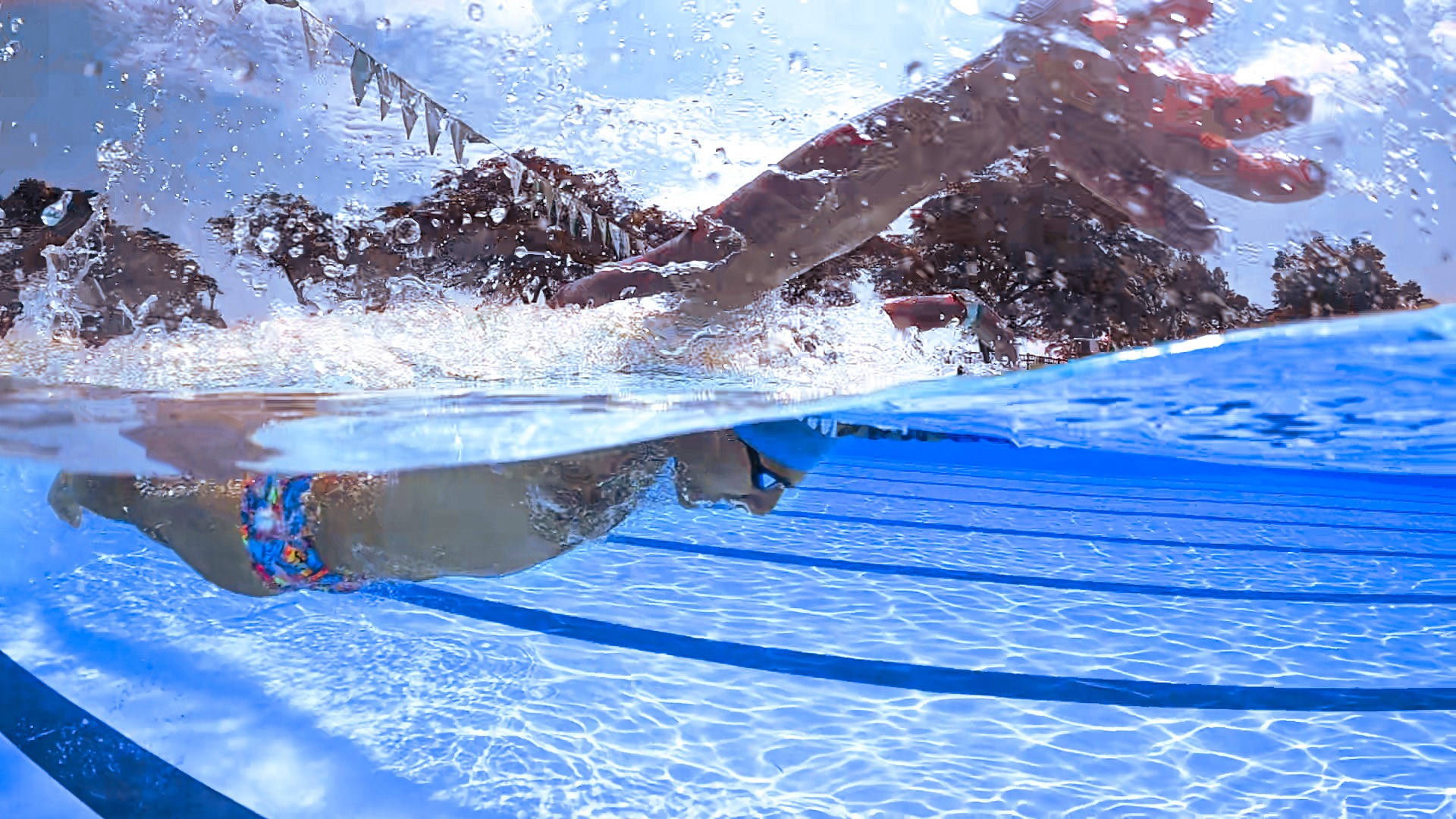
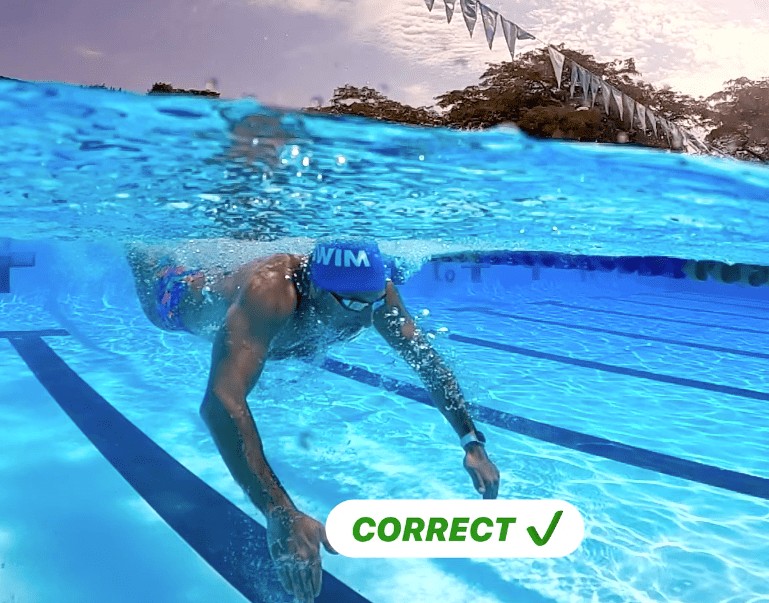
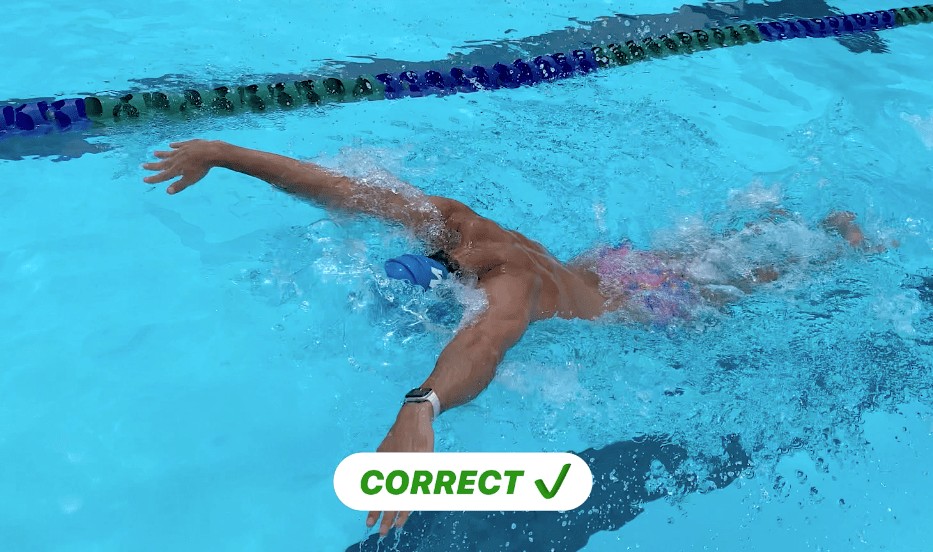
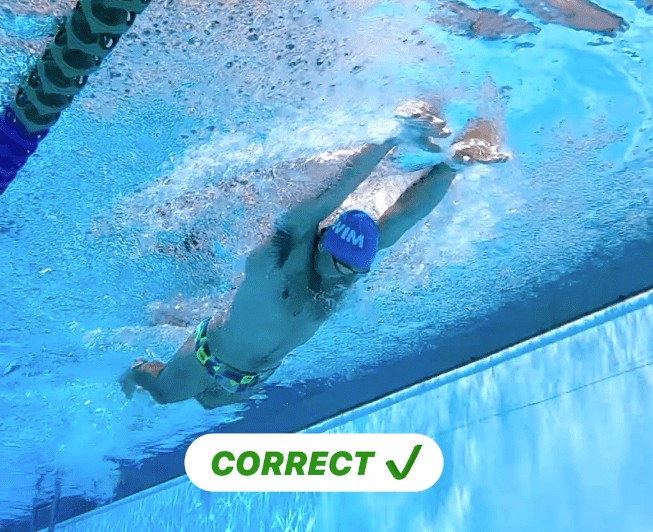
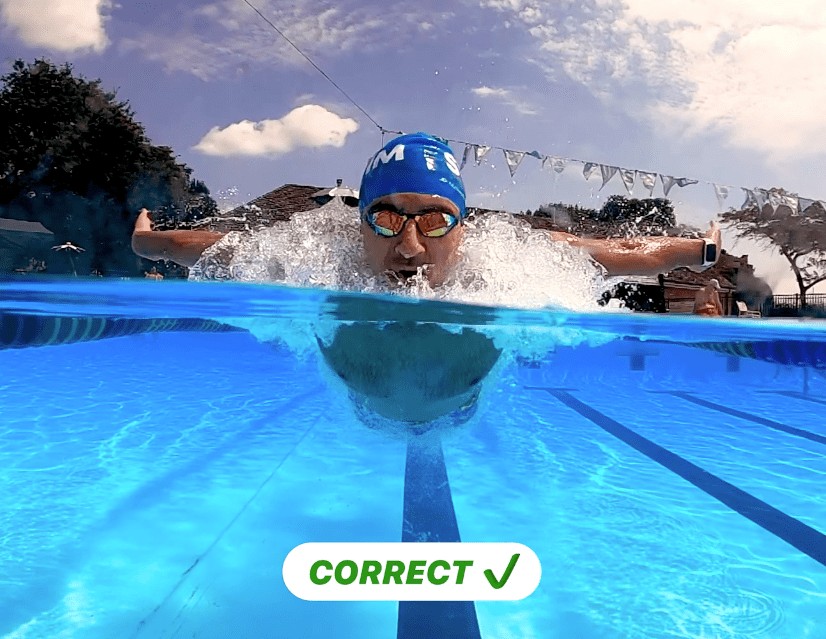
8.4. Tracking Progress
Monitor your progress to stay motivated and make adjustments to your training plan.
- Record Times: Track your times for various distances and intervals.
- Analyze Technique: Evaluate your stroke technique and identify areas for improvement.
- Adjust Plan: Modify your training plan based on your progress and feedback.
- Celebrate Successes: Acknowledge and celebrate your achievements to stay motivated.
9. Nutrition and Recovery for Butterfly Swimmers
Proper nutrition and recovery are essential for optimizing your performance and preventing injuries.
9.1. Fueling Your Body
Consume a balanced diet to provide your body with the energy it needs to perform at its best.
- Carbohydrates: Consume carbohydrates for energy, focusing on complex carbohydrates such as whole grains, fruits, and vegetables.
- Protein: Eat protein to repair and rebuild muscle tissue, including lean meats, poultry, fish, beans, and tofu.
- Fats: Include healthy fats in your diet for hormone production and overall health, such as avocados, nuts, seeds, and olive oil.
- Hydration: Stay hydrated by drinking plenty of water throughout the day, especially before, during, and after workouts.
9.2. Recovery Strategies
Implement recovery strategies to help your body repair and rebuild after training.
- Sleep: Get adequate sleep to allow your body to recover and rebuild muscle tissue.
- Nutrition: Consume a post-workout meal or snack that includes carbohydrates and protein to replenish energy stores and repair muscle damage.
- Stretching: Stretch your muscles to improve flexibility and reduce muscle soreness.
- Foam Rolling: Use a foam roller to release muscle tension and improve circulation.
- Massage: Consider getting a massage to promote relaxation and reduce muscle soreness.
- Active Recovery: Engage in light activity, such as swimming or walking, to promote circulation and reduce stiffness.
- Cryotherapy: Cold water immersion or ice baths to reduce inflammation.
9.3. The Role of Hydration
Hydration is crucial for maintaining optimal performance and preventing dehydration.
- Water Intake: Drink plenty of water throughout the day, especially before, during, and after workouts.
- Electrolyte Drinks: Consider consuming electrolyte drinks to replace electrolytes lost through sweat.
- Dehydration Symptoms: Be aware of the symptoms of dehydration, such as fatigue, dizziness, and muscle cramps.
10. The Mental Game of Butterfly Swimming
The butterfly stroke requires not only physical strength and technique but also mental toughness and focus.
10.1. Visualization
Use visualization techniques to mentally rehearse your butterfly stroke.
- Mental Imagery: Visualize yourself swimming butterfly with perfect technique, focusing on your body position, arm movements, kick, and breathing.
- Positive Outcomes: Visualize yourself achieving your goals and overcoming challenges.
- Consistency: Practice visualization regularly to reinforce positive mental patterns.
10.2. Goal Setting
Set clear and achievable goals to stay motivated and focused.
- Long-Term Goals: Define your long-term goals, such as qualifying for a major competition.
- Short-Term Goals: Set short-term goals that contribute to your long-term goals, such as improving your butterfly time by one second each month.
- Process Goals: Focus on process goals that are within your control, such as maintaining proper technique throughout your workouts.
10.3. Positive Self-Talk
Use positive self-talk to build confidence and overcome negative thoughts.
- Affirmations: Repeat positive affirmations to reinforce your strengths and capabilities.
- Challenge Negative Thoughts: Challenge negative thoughts by reframing them in a positive light.
- Focus on Strengths: Focus on your strengths and past successes to build confidence.
10.4. Overcoming Fear and Doubt
Address your fears and doubts to unlock your full potential.
- Identify Fears: Identify your specific fears and doubts about swimming butterfly.
- Challenge Negative Beliefs: Challenge the negative beliefs that underlie your fears and doubts.
- Seek Support: Seek support from coaches, teammates, and mentors.
- Celebrate Progress: Acknowledge and celebrate your progress to build confidence and momentum.
FAQ: Frequently Asked Questions About Learning the Butterfly Stroke
- What is the most challenging aspect of learning the butterfly stroke?
- Many swimmers find coordinating the undulating body motion with the arm movements and breathing to be the most challenging aspect.
- How long does it typically take to learn the butterfly stroke?
- The time it takes to learn butterfly varies depending on individual skill level, dedication, and coaching. Some swimmers may grasp the basics in a few weeks, while others may take several months to develop proficiency.
- What are the essential drills for improving butterfly technique?
- Essential drills include the flow drill, single arm butterfly, and butterfly pull with freestyle kick. These drills help isolate and improve specific components of the stroke.
- How important is core strength for swimming butterfly?
- Core strength is crucial for maintaining body position, generating power, and coordinating the undulating motion in butterfly.
- What is the correct breathing technique for butterfly?
- The correct breathing technique involves inhaling as your arms recover and exit the water, taking a quick breath, and exhaling fully underwater as your arms enter the water.
- What are the common mistakes swimmers make when learning butterfly?
- Common mistakes include dropping hips, over-breathing, improper kick technique, and incorrect hand entry.
- How can I improve my dolphin kick?
- To improve your dolphin kick, focus on initiating the kick from your hips, keeping your legs squeezed together, pointing your toes, and emphasizing both the upward and downward phases of the kick.
- Can I learn butterfly if I have limited flexibility?
- While flexibility can be helpful, it is not essential for learning butterfly. Incorporate stretching exercises to improve your range of motion and focus on proper technique to compensate for any limitations.
- What type of training plan is best for butterfly swimmers?
- A well-rounded training plan should include technique drills, strength training, endurance sets, and active recovery days. Customize your plan to target your specific weaknesses and goals.
- Is butterfly stroke good for weight loss?
- Yes, butterfly stroke is an excellent workout for weight loss. Because this is one of the most difficult swimming strokes, it burns more calories in a shorter period of time.
Conclusion: Embark on Your Butterfly Journey with Confidence
Mastering the butterfly stroke is a challenging but achievable goal with the right guidance and dedication. At LEARNS.EDU.VN, we are committed to providing you with the resources and support you need to succeed. Remember to focus on proper technique, incorporate targeted drills, and maintain a consistent training plan. As you progress, celebrate your achievements and stay motivated by setting new goals.
Unlock your potential in the pool by exploring the comprehensive resources available at LEARNS.EDU.VN. Whether you’re looking for detailed stroke analysis, personalized training plans, or expert coaching advice, we have everything you need to take your butterfly swimming to the next level. Visit our website today at LEARNS.EDU.VN and discover a wealth of information and support to help you achieve your swimming goals. For any inquiries, please contact us at 123 Education Way, Learnville, CA 90210, United States or via Whatsapp at +1 555-555-1212. Start your journey toward butterfly excellence with learns.edu.vn today!